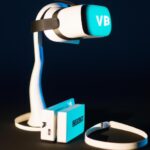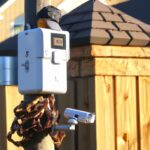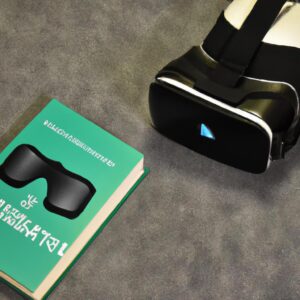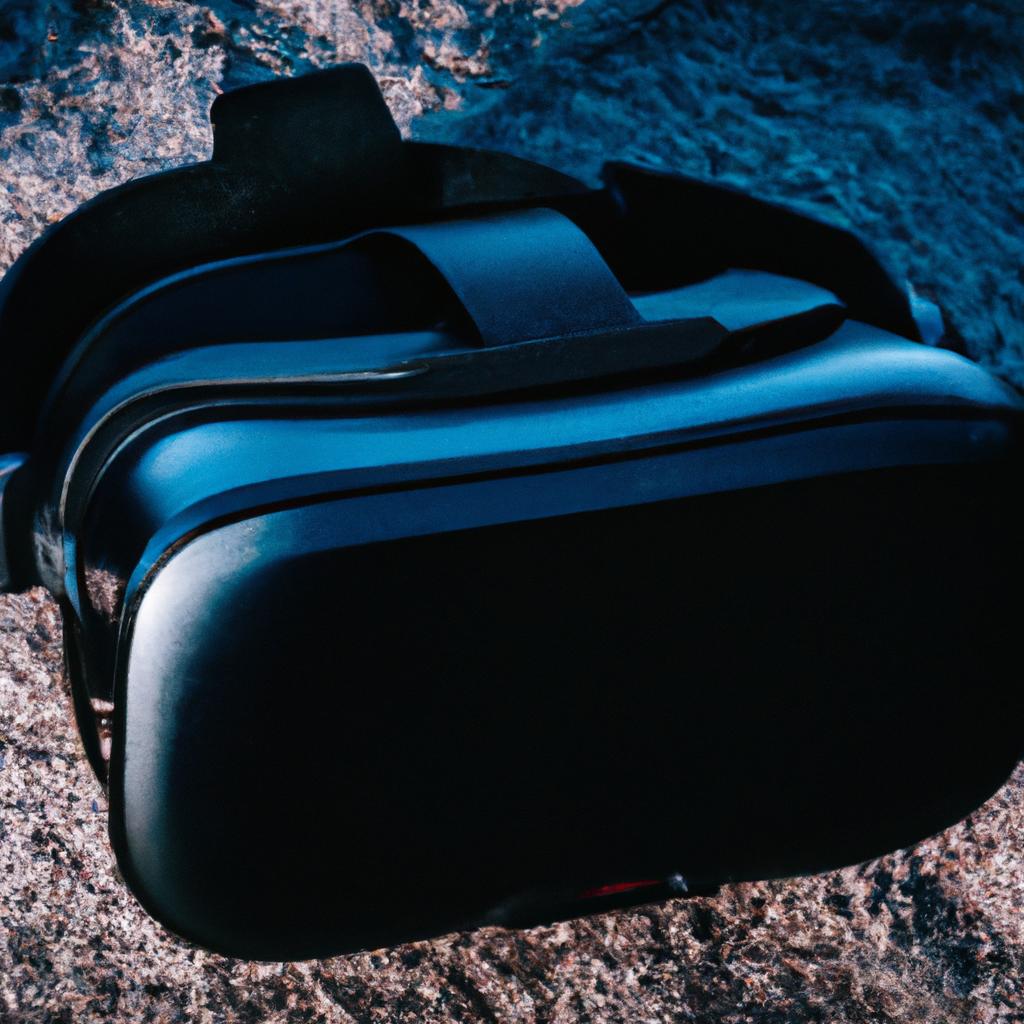Introduction to Virtual Reality and Augmented Reality in Education
Virtual Reality (VR) and Augmented Reality (AR) are two of the most revolutionary technologies that have emerged in recent years. They are quickly being adopted into education, and with good reason. By using these technologies, classrooms can now provide students with immersive, engaging, and interactive learning experiences that are out of reach for traditional instructional methods.
VR uses computer-generated simulations to create a three-dimensional, immersive environment where users can explore and interact with virtual elements. AR is slightly different in that it integrates virtual elements into real-world environments. This allows students to interact and engage with content in a new and exciting way.
Both VR and AR offer numerous benefits for the classroom, such as increased engagement, improved understanding, and enhanced collaboration. However, there are also some potential drawbacks to using these technologies in the classroom, including a lack of available content and the need for specialized equipment.
In this guide, we’ll take a look at how VR and AR are being used in education, exploring the history of these technologies, the advantages and disadvantages of using them, and some examples of what they can do when implemented correctly. Lastly, we’ll cover the technological requirements necessary for successful implementation, as well as the cost of incorporating these tools into a classroom setting.
History of VR and AR in Education
The concept of using virtual and augmented reality for educational purposes has been around for some time. In the early 1990s, virtual reality headsets were used in classrooms to simulate complex concepts and landscapes as part of a lesson. Over the next several decades, technology improved and became more accessible, making it easier for teachers to incorporate augmented and virtual reality into their curriculums.
The first widely used augmented reality application in education was the “Magic School Bus” video game, released in 1999. This game allowed students to explore various environments, such as inner body systems, outer space, and ancient civilizations, within an interactive 3D setting.
In the 2010s, advancements in technology allowed for the development of highly immersive augmented and virtual reality experiences via mobile devices and specialized headsets. These technologies have been further adapted for use in classrooms, with educators worldwide finding innovative ways to use AR and VR to engage students in new and exciting ways.
Today, virtual and augmented reality is being used in schools across the globe. From hands-on experiments in STEM to remote field trips to foreign countries, virtual and augmented reality is allowing teachers to create engaging learning experiences that significantly expand upon traditional methods of teaching.
How is VR and AR being Used Today?
As technology advances, virtual reality (VR) and augmented reality (AR) are becoming more accessible and available in educational contexts around the world. From incorporating immersive 3D experiences to combining physical and virtual worlds, these applications of VR and AR are providing new ways for students to learn and experience education.
Organizations such as Magic Leap, Microsoft, Google, and Apple are working hard to make virtual and augmented reality available to classrooms, museums, universities, and other educational settings. For example, Magic Leap provides an Education Edition of their AR headset specifically designed for content and experiences specifically tailored to students.
In addition, countries such as France, Singapore, China, and Australia have been using VR and AR to teach their students. For instance, in Singapore, many government initiatives have been implemented, such as the “Smart Nation” program and the “5G National Programme Office”. These initiatives are modernizing the nation’s education system by incorporating virtual and augmented reality.
On a global level, several organizations have been created with the goal of developing virtual/augmented reality systems for the educational market. Some examples include Nearpod, Metaverse, and Learning Jar. These organizations help teachers and schools offer a wide range of interactive content, from simulations to 3D images, which can be used to enhance student learning.
Benefits of VR and AR in Education
Virtual and Augmented Reality technologies offer a range of advantages for the educational sector. It can act as a powerful learning tool that is engaging and interactive, allowing students to explore different topics and concepts with greater depth. By simulating real-world environments, VR and AR can also provide immersive experiences that help give students a better understanding of difficult concepts and topics. This can be especially helpful for those that learn better through visual aids.
VR and AR also enable much greater collaboration between learners, educators, and experts through virtual meetings or even globally distributed class sessions. The technology supplements existing teaching methods, enabling teachers to go beyond traditional textbooks and lecture notes to reach a broader audience. With the help of VR and AR, it’s easier to create engaging activities that can keep students interested and active, no matter their learning style.
In addition, leveraging VR and AR in schools can also help reduce costs associated with textbooks and physical materials. With VR and AR, students can access digital resources directly, which also helps conserve natural resources. It also allows teachers to experiment and innovate more, so they are able to find new and creative ways to teach material.
Challenges and Drawbacks of Using AR and VR in Education
Virtual Reality (VR) and Augmented Reality (AR) technologies are becoming more commonplace in classrooms around the world. However, these tools come with a host of risks and challenges that must be carefully considered before implementation.
First, VR and AR technology requires considerable technical knowledge to be able to effectively utilize its features. Educators must be comfortable working with cutting-edge technical hardware and software, as well as understand the implications of VR and AR for teaching and learning. Additionally, they must learn how to troubleshoot problems should they arise.
Second, implementing VR and AR technology is expensive, and schools may not have the budget or resources to purchase the equipment needed. For example, headsets, computers, software, and other related hardware can be quite costly. Moreover, purchasing new devices regularly to keep up with the latest advancements can be a financial burden.
Third, there are still some ethical considerations to bear in mind with VR and AR technologies. For instance, student’s privacy must be respected when using such technologies, and it is important to ensure the environment created is appropriate for learning. Finally, access remains an issue, as certain students may not have access to VR or AR technology due to cost or availability.
Conclusion
Virtual and augmented reality technologies have the potential to revolutionize the way educators teach and students learn in the classroom. VR and AR can provide an immersive learning experience, enabling students to go on virtual field trips, explore different places and times, and gain hands-on experience. When used together with traditional teaching methods, these technologies have been proven to increase student engagement and improve student learning outcomes. Additionally, they are accessible to all students regardless of educational background or household income.
This guide has discussed the history of VR and AR in education, how they are being used today, the benefits and drawbacks associated with their use, and technology requirements necessary for successful implementation. Further, it has provided examples of how these technologies are being used in classrooms, a checklist for implementation, and cost considerations. It is clear that VR and AR have played an important role in education, and will continue to do so as technology advances.
Resources
There are many resources available to educators looking to incorporate VR and AR into their class curriculums. Here are a few of the most helpful we have found:
- Augmented Reality in Education is a comprehensive guide that provides detailed information about the different uses of AR in educational settings.
- Virtual Reality in Education is an in-depth book about how VR can be used to create interactive learning experiences and simulations.
- The Benefits of Technology in Education is a journal article that examines the potential of VR/AR technologies to improve teaching and learning outcomes.
- Best Practices for Implementing AR/VR Technologies in Schools provides educators with tips and advice on how best to integrate AR and VR into their classrooms.
In addition, there are many websites and blogs dedicated to this topic, which you may find useful in learning more about the applications of VR and AR in education.
Examples of AR and VR in the Classroom
In recent years, virtual and augmented reality technologies have been increasingly used in educational settings around the world. These technologies are being used to create immersive learning experiences that can engage students and help them understand difficult concepts better. Educators are finding new ways to use virtual and augmented reality to make classroom lessons more enjoyable, interactive and engaging.
One example of this is how VR technology has been used to provide virtual field trips for students. For instance, students in a biology class can take a virtual tour of an African savanna to explore its wildlife without leaving the classroom or expending a lot of time preparing for a physical field trip. VR technology can also be used to allow students to experience events from the past, such as visiting ancient Rome or Egypt.
AR technology is also becoming increasingly popular in the classroom. Many educators are finding ways to use this technology to engage students with interactive activities, such as building 3D models of molecules or exploring the inner workings of a solar system. AR technologies can also be used to create augmented simulations of real-world scenarios, allowing students to take on the role of a scientist in a lab or an archaeologist in an excavation site.
These are just a few of the ways in which educators have been able to utilize virtual and augmented reality technologies in their classrooms. The possibilities of using VR and AR in education are endless, and educators around the world are constantly finding new and innovative ways to make learning more enjoyable and engaging for their students.
Technology Necessary to Implement AR and VR in Education
Virtual and augmented reality technologies offer exciting new opportunities for the world of education, and can be used as a valuable tool to help students learn in a more visual and interactive way. However, incorporating this technology into the classroom requires the necessary technical components, such as a head-mounted display (HMD) and handheld controllers.
An HMD is a device worn by the user which displays the virtual/augmented environment, giving the user a fully immersive experience. Most HMDs are equipped with a number of motion sensors and tracking cameras, and some come with built-in audio systems as well. Head-mounted displays can be expensive, so it’s important to consider budgets before deciding on which one is right for your school.
Handheld controllers help give the user greater control in the VR/AR environment. They come in various shapes and sizes and are typically designed to allow the user to interact with the environment as if it were real. Handheld controllers may also come equipped with motion-sensing technology, allowing the user to pick up objects and manipulate them in a natural way.
In addition to an HMD and handheld controllers, other necessary components for implementing virtual/augmented reality technologies in the classroom include a powerful enough computer to render the 3D environment, and content creation software to create the VR/AR experiences. Without these key components, students won’t be able to get the full benefit of the immersive experience.
It is important to ensure that the necessary hardware and software requirements are met when using VR/AR technology in the classroom, as it can be a costly endeavour. However, with the right investment in equipment and training, virtual and augmented reality can provide students with a unique learning experience, helping them to explore, engage and understand complex concepts and environments in a fun and exciting way.
Q&A: Common Questions and Answers About VR and AR in Education
With virtual reality (VR) and augmented reality (AR) technology becoming increasingly popular as an educational tool, there are many questions surrounding how it is being used, its effectiveness, and how to incorporate it in the classroom. To help you better understand the potential of VR and AR in education, we’ve put together a list of FAQs and their answers.
- What are the main advantages of using VR and AR in the classroom?
The primary benefits of using virtual/augmented reality in the classroom are increased engagement, enhanced learning outcomes, improved collaboration between students, and an overall more immersive experience. VR and AR technologies can also provide access to content and experiences that would otherwise be difficult to access.
- Are VR and AR only used for entertainment in the classroom?
No, while they can be used for educational games and simulations, VR and AR can also be utilized for activities such as science experiments, history lessons, and exploring complex concepts.
- Do I need any special equipment to use VR and AR in my classroom?
Yes, you will need the right hardware and software to get started using VR and AR technologies in your classroom. This may include head-mounted displays, controllers, projectors, special software, and more.
- How much does it cost to incorporate VR and AR into the classroom?
The cost of using VR and AR for educational purposes can vary significantly, depending on the type of equipment you choose, the size of your classroom, and the activities you plan to use. Generally speaking, VR headsets and other special equipment can cost anywhere from a few hundred to a few thousand dollars.
Cost of AR and VR for Education
When it comes to implementing virtual/augmented reality technologies into an educational setting, cost is a major factor to consider. While there are options available for schools to rent or borrow necessary equipment, purchasing the hardware can be expensive. Depending on the type of equipment used, such as headsets, controllers, and sensors, the costs can range from thousands to upwards of tens of thousands of dollars. Additionally, some programs or software have subscription fees that incur over time.
However, there are low-cost options and ways to reduce the costs associated with virtual and augmented reality. Many vendors offer packages that include multiple pieces of equipment, creating a discounted rate overall. Schools can also take part in funding opportunities, such as grants or donations, to cover the costs. Lastly, there are free or low-cost apps available that may meet the school’s needs without breaking the bank.
In conclusion, while the cost of incorporating virtual/augmented reality into the classroom can be high depending on the hardware used, there are options to reduce the expenses. By using package discounts, grants, and free or low-cost apps, schools can find ways to integrate these technologies without breaking the budget.
Checklist for Implementation
Implementing augmented reality and virtual reality technologies in the classroom can be a daunting task. However, with the right guidance, any educator can successfully incorporate AR and VR into their classroom. This checklist provides an easy-to-follow guide to help you get started on your journey:
- Identify which content you want to implement AR and VR into.
- Research what technology and hardware is needed to display the content.
- Develop your lesson plan and include the activities, objectives, and outcomes.
- Purchase the necessary hardware. Consider budget, installation time, and logistics.
- Train your staff on the appropriate use of AR and VR.
- Test the lesson on a small group of students before implementing it into the curriculum.
- Gauge the effectiveness of the lesson and make any necessary changes.
- Roll out the lesson to the rest of the class.
- Analyze the data and feedback to measure the success of the lesson.
With this step-by-step guide, you are well on your way to successfully integrating AR and VR into your classroom.
comments: 0











